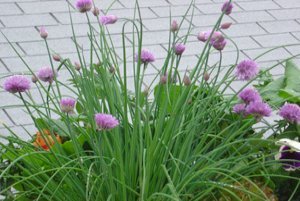Activities directors, caregivers, and healthcare professionals,here is some great information
Here is a great dementia resource for caregivers and healthcare professionals,
Here is information on being the best caregiver you can be
Flower and Garden Tips

Growing chives - why? ..Chives are probably the easiest herbs to grow in the garden.
They can be added to just about any meal you would normally add onions to, and they're very good for you!
Chives are the smallest of the onion family and there are a fair few types to choose from.
I've grown 'garlic' chives for years in the garden, and they are really useful, especially if you've run out of garlic.
You can eat every part of the chive plant. The edible flowers add colour to the salad bowl or other garnish, the grass-like leaves can be cut up and added to cooked potatoes, salads, sauces and even sandwiches, and the bulb can be used as a mild onion.
Although the flower stalk is edible, once the flower has been produced, there is very little taste or nutrients left in the stalk. Discard the flower stalks, and crumble the flower heads into your salad.
Growing chives: positioning
Chives like sun but do like a little shade during long hot summers. They are fairly good at tolerating drought conditions, but are happiest in moist well-drained soil.
Place chive plants in different parts of the garden, so you've always got something to pick and eat!
Sowing and Planting:
Chives do very well from seed. Plant a few seeds in a pot very early in the year and keep warm and watered until the seedlings are large enough to plant outside.
Plant out in well dug soil, preferably with some organic compost mixed in. You won't need to feed chives once they're in the ground, unless your ground is particularly poor, in which case you should give the chive plants a monthly feed.
Keep weed-free and watered until well established.
Growing chives in containers is also possible! Keep a pot in the kitchen. Remember to water and the plant will see you right through the season. When the flowers start to die back, cut the plant down to about 2-3 inches high and the chives will grow again.
Thompson & Morgan have chive seeds available.....
"Garden Chives" "Garlic Chinese" Chives
Looking after your chives:
There really won't be much to do.... chives are 100% easy plants to grow. Don't plant near onions as they could get onion fly, but apart from that just pick and eat them!
Don't start using the chives until the plants are fairly well established - late summer in the first year of growth.
Harvesting:
Cut chives as you need them. Use scissors and leave 2-3 inches of leaf on the plant. When the flowers start to dry and die back, you can cut down the whole plant ( to 2-3 inches high ) and the chives will grow again.
Use the flowers in the kitchen or leave to bloom on the plant. The purple flowers look spectacular on a well-established plant.
After three or four years, the chive plant should be divided. Dig up carefully, then gently, but firmly, separate the clumps of bulbs and re-plant.
During the winter months your chive plant may die back completely. Don't worry, it'll come back in the spring.











No comments:
Post a Comment